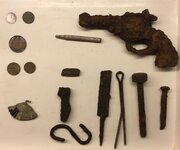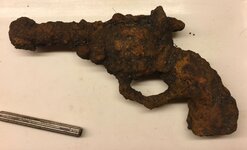Nashvegas
Jr. Member
- Aug 9, 2017
- 55
- 139
- Detector(s) used
- Minelab X Terra 705
Teknetics T2 SE
- Primary Interest:
- Metal Detecting
I'm new here and just got a 250 last week. Been having fun with it. Trying to learn the machine. My question is: if I'm getting differing signals when I turn 90 degrees, (for instance I'm getting a signal for a coin one direction, and then I turn 90 degrees and reswing and it says iron), does that mean it's junk such as nails? Every time it did this in a particular yard today, I dug up a nail or aluminum siding pieces. I started ignoring when it gives those different signals. Is it dumb to ignore them?


 Get out there and study grasshopper.
Get out there and study grasshopper. HH
HH


 channel is calabash digger on youtube. this is the link yo it.
channel is calabash digger on youtube. this is the link yo it. 

